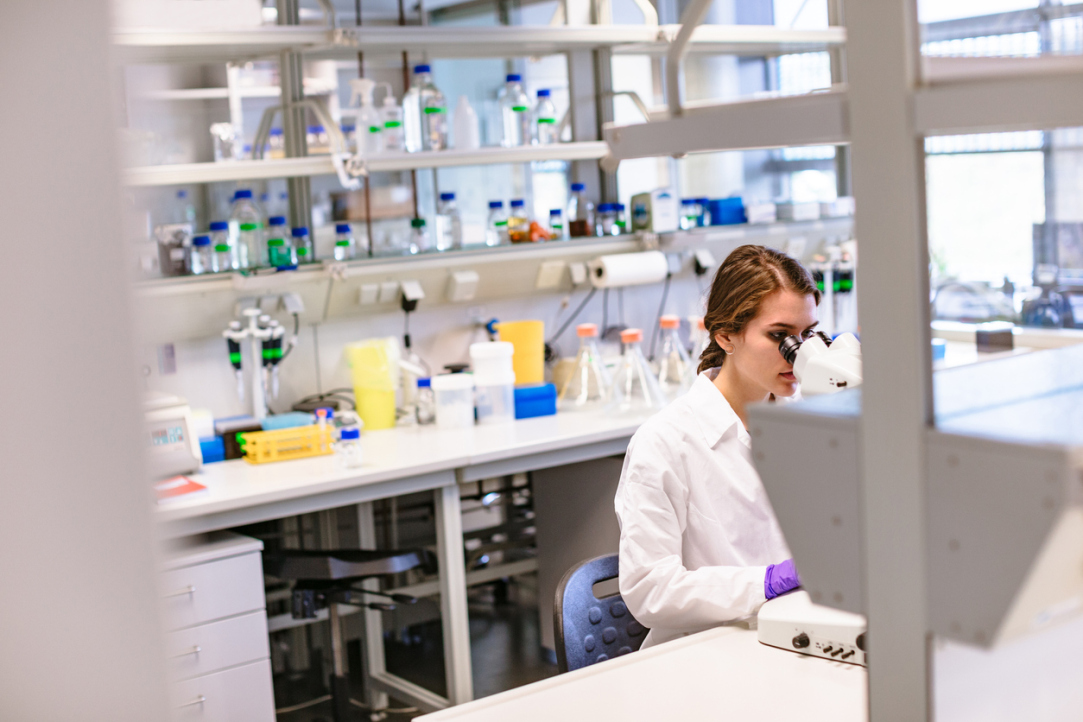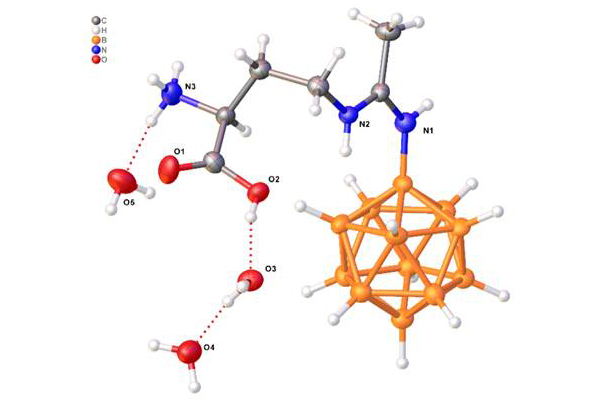Russian Scientists Develop New Compound for Treating Aggressive Tumours

A team of Russian researchers has synthesised a novel compound for boron neutron capture therapy (BNCT), a treatment for advanced cancer that uses the boron-10 isotope. The compound exhibits low toxicity, excellent water solubility, and eliminates the need for administering large volumes. Most importantly, the active substance reaches the tumour with minimal impact on healthy tissues. The study was published in the International Journal of Molecular Sciences shortly before World Cancer Day, observed annually on February 4.
Boron neutron capture therapy (BNCT) is an advanced cancer treatment that leverages the properties of the boron-10 isotope. The method involves first saturating tumour cells with boron-10, followed by irradiation with thermal neutrons. This triggers a nuclear reaction that selectively destroys cancer cells while sparing healthy tissue. Thus, the treatment success largely depends on the compound's ability to effectively deliver boron-10 to the tumour and maintain the necessary boron concentration.
A team of scientists from the HSE Faculty of Chemistry, the Institute of General and Inorganic Chemistry of the Russian Academy of Sciences, and the N.N. Blokhin National Medical Research Centre of Oncology has developed three compounds that combine the closo-dodecaborate anion with amino acids containing a side-chain amino group. The molecules are structurally similar to natural amino acids, allowing them to 'trick' the body's transport systems into capturing and delivering them to cells, including cancer cells. This makes the substance effective at targeting tumours, where it accumulates.

One of the compounds demonstrated low toxicity, with the half-lethal dose (LD50) for experimental animals ranging from 150 to 300 mg per kilogram of body weight. In experiments, the compound not only demonstrated the ability to accumulate boron in tumour tissues but also confirmed its effectiveness in animals. When administered to laboratory mice, the boron concentration in melanoma tumour cells was six times higher than in healthy tissues after 45 minutes.
The compound can exist in two forms depending on the pH level. The first form is a sodium salt, which is highly soluble in water under conditions close to physiological pH, making it convenient for therapeutic use. The second form occurs upon acidification, when the compound transforms into an insoluble internal salt useful for obtaining a medically pure product during the stages of synthesis, isolation, and purification.

Margarita Ryabchikova
'The aim of the study was to reduce toxicity and simplify the compound purification process, building on data from previous research. As a result, three new compounds were synthesised. One of them exhibited optimal characteristics: it does not cause significant side effects when administered intravenously and dissolves well in water, setting it apart from existing therapeutic drugs,' explains study author Margarita Ryabchikova, a third-year student at the HSE Faculty of Chemistry. 'We aimed not only for high efficacy but also for production convenience. The developed method can be easily scaled to produce the required quantities of the product while remaining economically viable.'
The study demonstrated that the new compound accumulates more effectively in the tissues of certain types of tumours compared to the currently used drug. This is an important step toward developing a safer and more accessible therapy. The research is still in its early stages, but this development has the potential to significantly improve cancer treatment outcomes and broaden the applications of boron neutron capture therapy in the fight against various types of tumours.
See also:
Scientists Uncover Why Consumers Are Reluctant to Pay for Sugar-Free Products
Researchers at the HSE Institute for Cognitive Neuroscience have investigated how 'sugar-free' labelling affects consumers’ willingness to pay for such products. It was found that the label has little impact on the products’ appeal due to a trade-off between sweetness and healthiness: on the one hand, the label can deter consumers by implying an inferior taste, while on the other, it signals potential health benefits. The study findings have been published in Frontiers in Nutrition.
HSE Psycholinguists Launch Digital Tool to Spot Dyslexia in Children
Specialists from HSE University's Centre for Language and Brain have introduced LexiMetr, a new digital tool for diagnosing dyslexia in primary school students. This is the first standardised application in Russia that enables fast and reliable assessment of children’s reading skills to identify dyslexia or the risk of developing it. The application is available on the RuStore platform and runs on Android tablets.
Physicists Propose New Mechanism to Enhance Superconductivity with 'Quantum Glue'
A team of researchers, including scientists from HSE MIEM, has demonstrated that defects in a material can enhance, rather than hinder, superconductivity. This occurs through interaction between defective and cleaner regions, which creates a 'quantum glue'—a uniform component that binds distinct superconducting regions into a single network. Calculations confirm that this mechanism could aid in developing superconductors that operate at higher temperatures. The study has been published in Communications Physics.
Neural Network Trained to Predict Crises in Russian Stock Market
Economists from HSE University have developed a neural network model that can predict the onset of a short-term stock market crisis with over 83% accuracy, one day in advance. The model performs well even on complex, imbalanced data and incorporates not only economic indicators but also investor sentiment. The paper by Tamara Teplova, Maksim Fayzulin, and Aleksei Kurkin from the Centre for Financial Research and Data Analytics at the HSE Faculty of Economic Sciences has been published in Socio-Economic Planning Sciences.
Larger Groups of Students Use AI More Effectively in Learning
Researchers at the Institute of Education and the Faculty of Economic Sciences at HSE University have studied what factors determine the success of student group projects when they are completed with the help of artificial intelligence (AI). Their findings suggest that, in addition to the knowledge level of the team members, the size of the group also plays a significant role—the larger it is, the more efficient the process becomes. The study was published in Innovations in Education and Teaching International.
New Models for Studying Diseases: From Petri Dishes to Organs-on-a-Chip
Biologists from HSE University, in collaboration with researchers from the Kulakov National Medical Research Centre for Obstetrics, Gynecology, and Perinatology, have used advanced microfluidic technologies to study preeclampsia—one of the most dangerous pregnancy complications, posing serious risks to the life and health of both mother and child. In a paper published in BioChip Journal, the researchers review modern cellular models—including advanced placenta-on-a-chip technologies—that offer deeper insights into the mechanisms of the disorder and support the development of effective treatments.
Using Two Cryptocurrencies Enhances Volatility Forecasting
Researchers from the HSE Faculty of Economic Sciences have found that Bitcoin price volatility can be effectively predicted using Ethereum, the second-most popular cryptocurrency. Incorporating Ethereum into a predictive model reduces the forecast error to 23%, outperforming neural networks and other complex algorithms. The article has been published in Applied Econometrics.
Administrative Staff Are Crucial to University Efficiency—But Only in Teaching-Oriented Institutions
An international team of researchers, including scholars from HSE University, has analysed how the number of non-academic staff affects a university’s performance. The study found that the outcome depends on the institution’s profile: in research universities, the share of administrative and support staff has no effect on efficiency, whereas in teaching-oriented universities, there is a positive correlation. The findings have been published in Applied Economics.
Physicists at HSE University Reveal How Vortices Behave in Two-Dimensional Turbulence
Researchers from the Landau Institute for Theoretical Physics of the Russian Academy of Sciences and the HSE University's Faculty of Physics have discovered how external forces affect the behaviour of turbulent flows. The scientists showed that even a small external torque can stabilise the system and extend the lifetime of large vortices. These findings may improve the accuracy of models of atmospheric and oceanic circulation. The paper has been published in Physics of Fluids.
Solvent Instead of Toxic Reagents: Chemists Develop Environmentally Friendly Method for Synthesising Aniline Derivatives
An international team of researchers, including chemists from HSE University and the A.N. Nesmeyanov Institute of Organoelement Compounds of the Russian Academy of Sciences (INEOS RAS), has developed a new method for synthesising aniline derivatives—compounds widely used in the production of medicines, dyes, and electronic materials. Instead of relying on toxic and expensive reagents, they proposed using tetrahydrofuran, which can be derived from renewable raw materials. The reaction was carried out in the presence of readily available cobalt salts and syngas. This approach reduces hazardous waste and simplifies the production process, making it more environmentally friendly. The study has been published in ChemSusChem.


